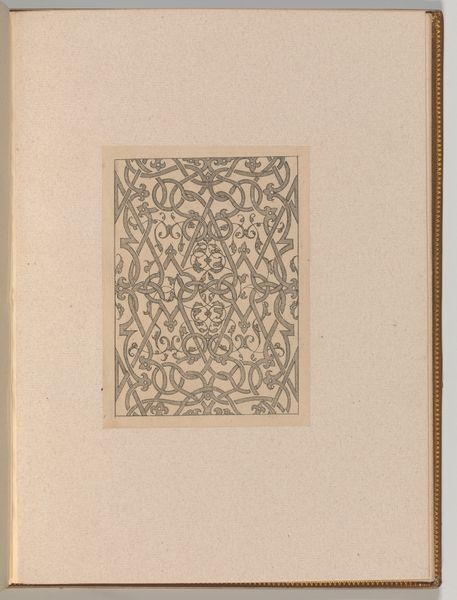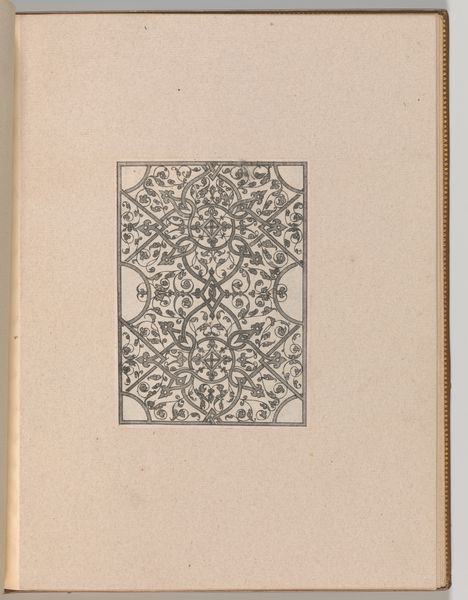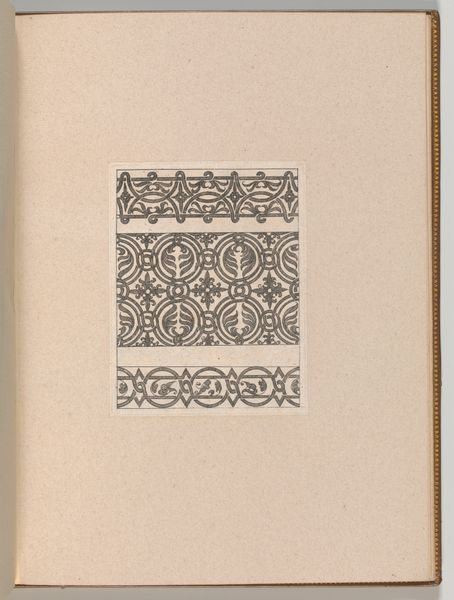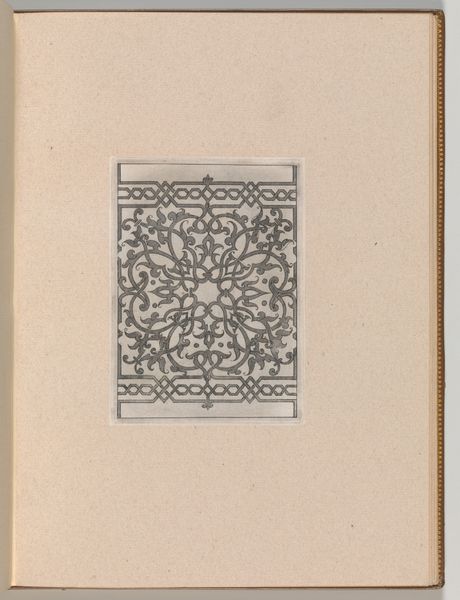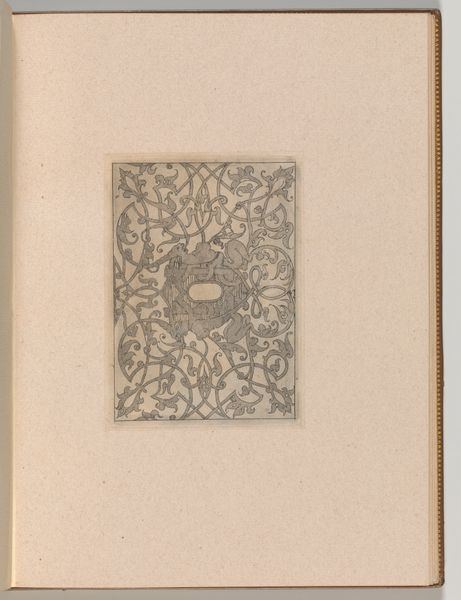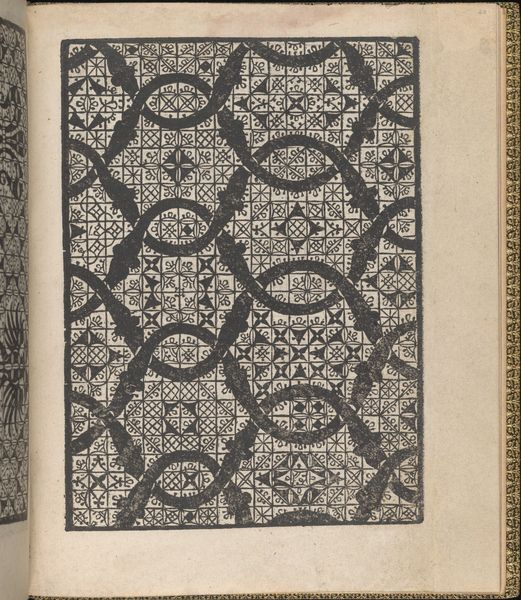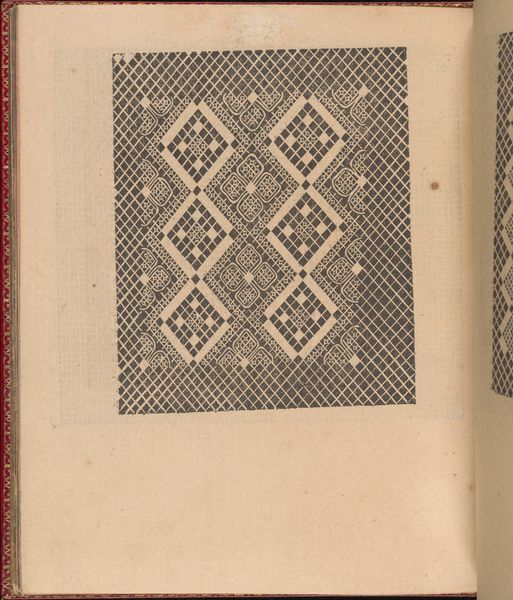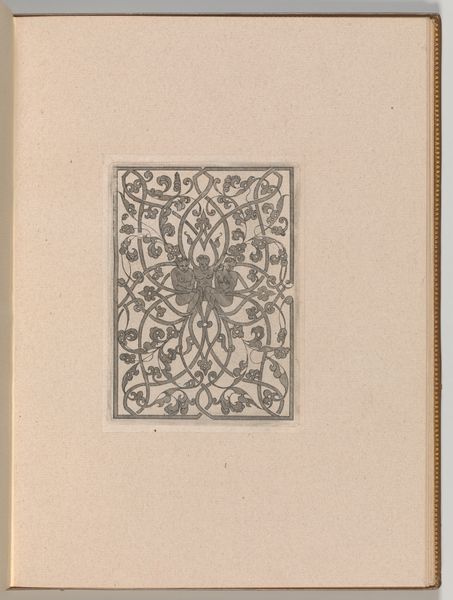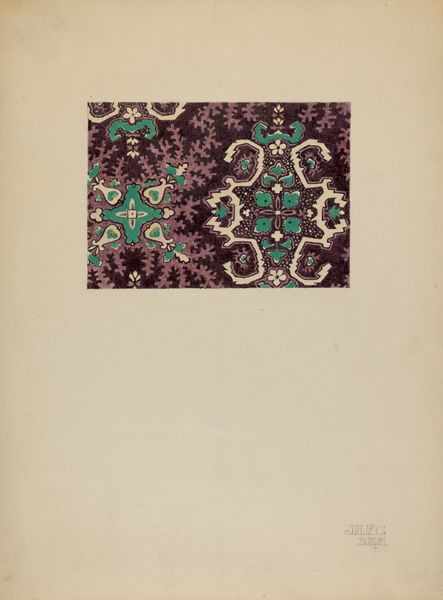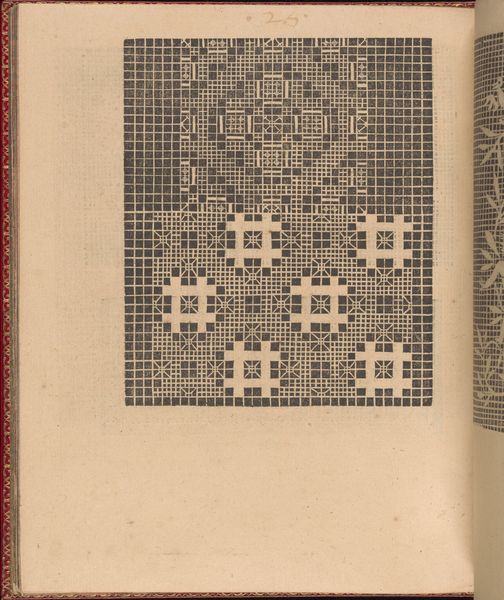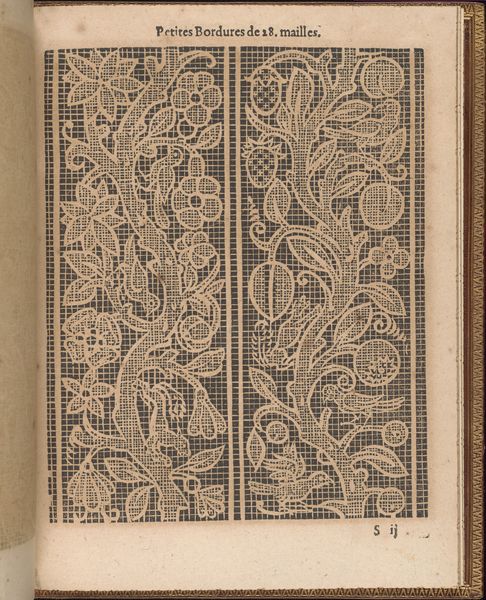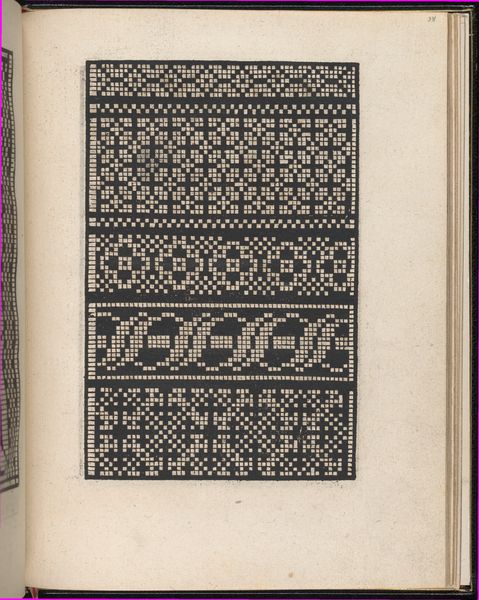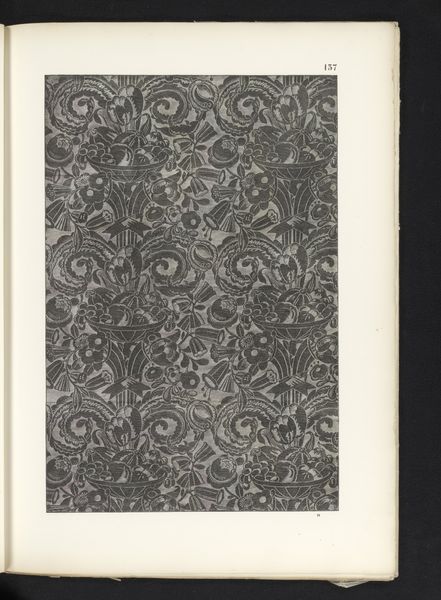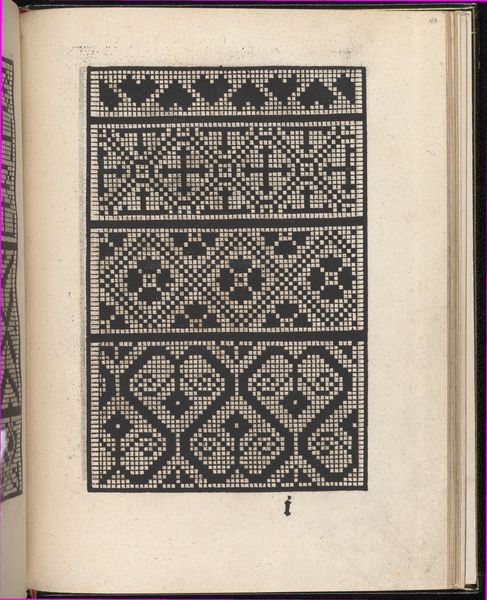
Copies after the 'Livre contenant passement de moresques' (plate 9) 1800 - 1900
0:00
0:00
print, paper
# print
#
paper
#
geometric
#
line
Dimensions: Sheet: 4 13/16 × 3 9/16 in. (12.2 × 9 cm) Plate: 4 1/2 × 3 5/16 in. (11.5 × 8.4 cm) Overall: 10 1/16 × 7 7/8 in. (25.5 × 20 cm)
Copyright: Public Domain
Curator: Oh, look at this little world! We have here, in the collection of the Metropolitan Museum of Art, plate 9 from 'Copies after the 'Livre contenant passement de moresques''. It's an ink and paper print created sometime between 1800 and 1900 after designs by Jacques Androuet Du Cerceau. Editor: Intricate, isn't it? At first glance, it reads as quite restrained, almost like faded wallpaper. A repetitive pattern, circles, interwoven lines. There's a delicacy here that almost whispers of forgotten elegance. Curator: It does whisper, doesn’t it? These types of moresque designs were used extensively throughout Europe and they're associated with a romantic vision of "Moorish" Spain, but their repetitive use naturalizes what once might have been considered ‘other’ and integrates it into a new decorative standard. Editor: And what did this ‘integration’ look like for the actual Moors? I’m skeptical about romanticizing appropriation; how were marginalized people invited into these spaces where their identities became motifs? What kind of symbolic violence took place as Moorish culture became decor? Curator: That's a necessary provocation! Perhaps, these designs, reproduced over and over again, slowly drained the source of its cultural power and made it purely decorative and accessible to anyone. I am drawn to the hypnotic rhythm; these repeating patterns seem like incantations. Editor: Incantations or chains? I see the same repetitive designs used as chains of control—who decides how identities are packaged and commodified as "exotic" motifs, erasing nuance and power in favor of palatability? Where's the soul, you know? I see beauty, sure, but also layers of loaded symbolism about power and privilege. Curator: Yes, absolutely—it is difficult to deny that shadow! Thinking of these patterns stripped bare, away from context... Is there also something profoundly human in creating order from chaos, in striving for symmetry, even if that symmetry flattens nuance? Editor: Right. That’s the crux, isn't it? Can beauty exist without confronting its baggage? I think this print challenges us to do just that: to hold the aesthetic appeal alongside its historical implications. Curator: An excellent tension to live in, really, and I'm grateful to this quiet, intricate artwork for stirring these reflections in us! Editor: Indeed! Perhaps it serves as a humble reminder to stay ever vigilant, even in spaces as apparently simple as decor, and ask, “Who’s invited to the banquet?”
Comments
No comments
Be the first to comment and join the conversation on the ultimate creative platform.
